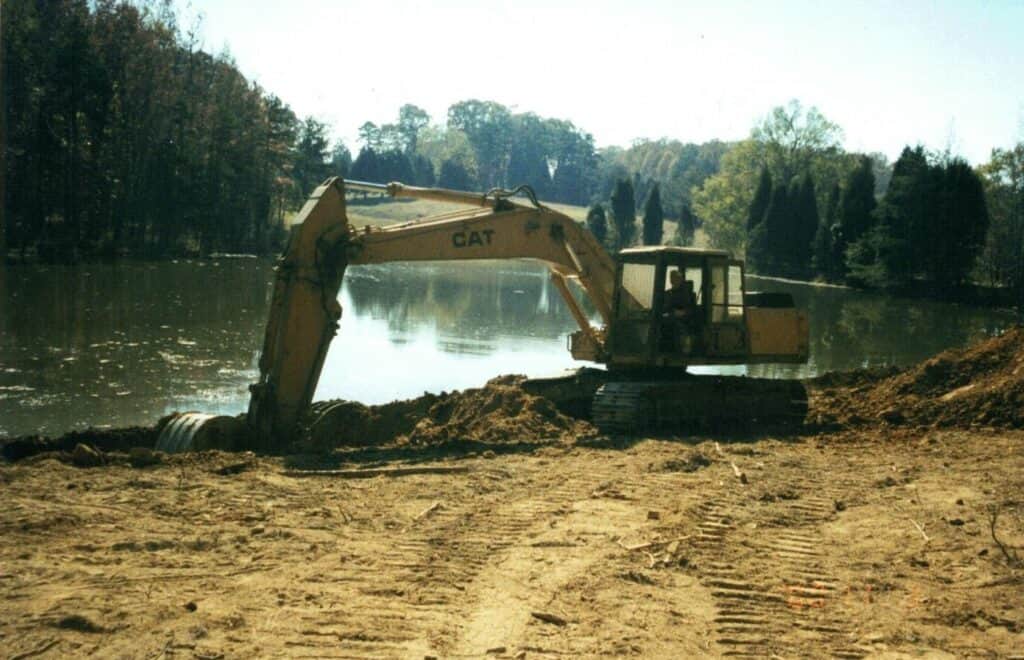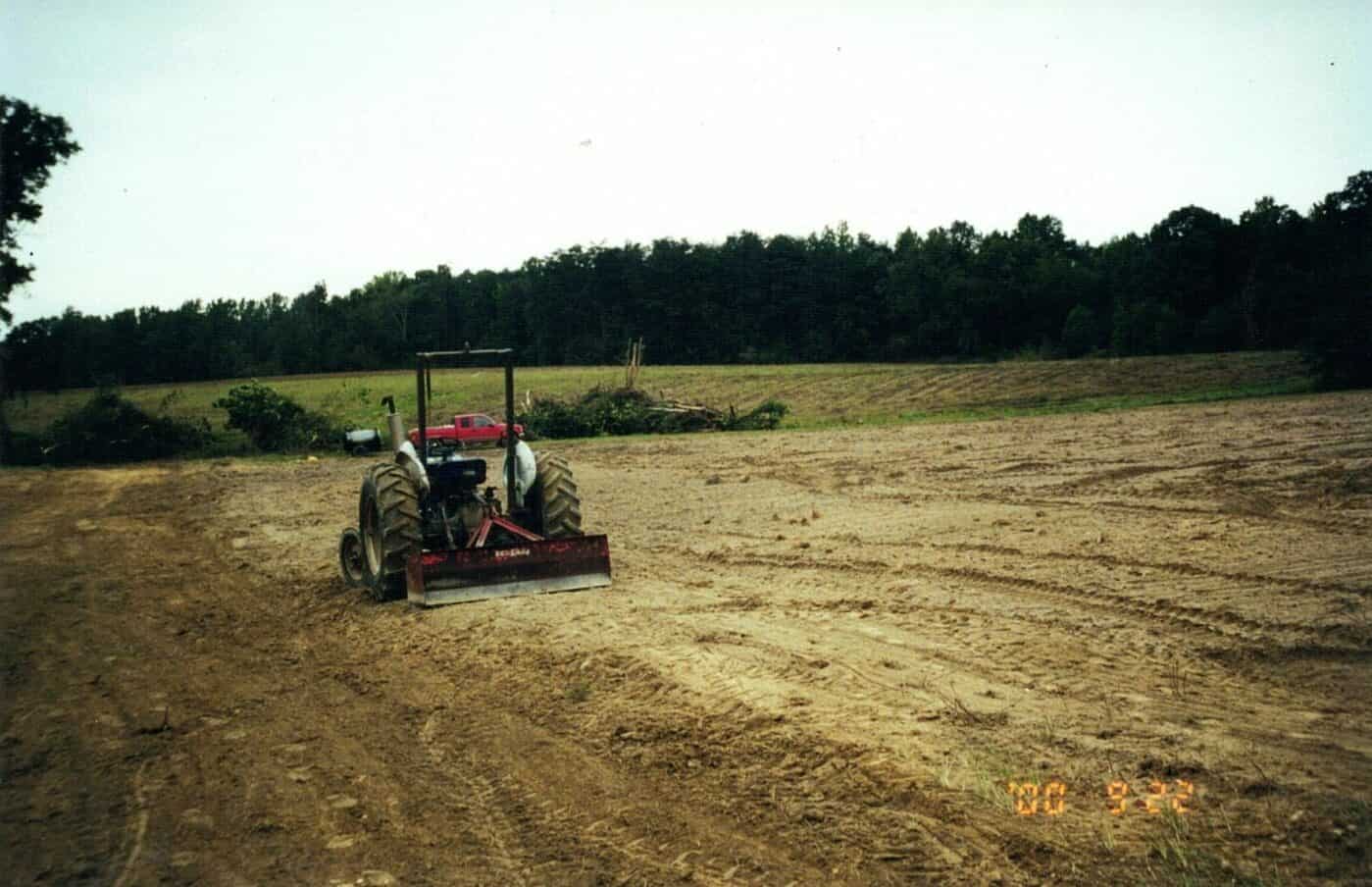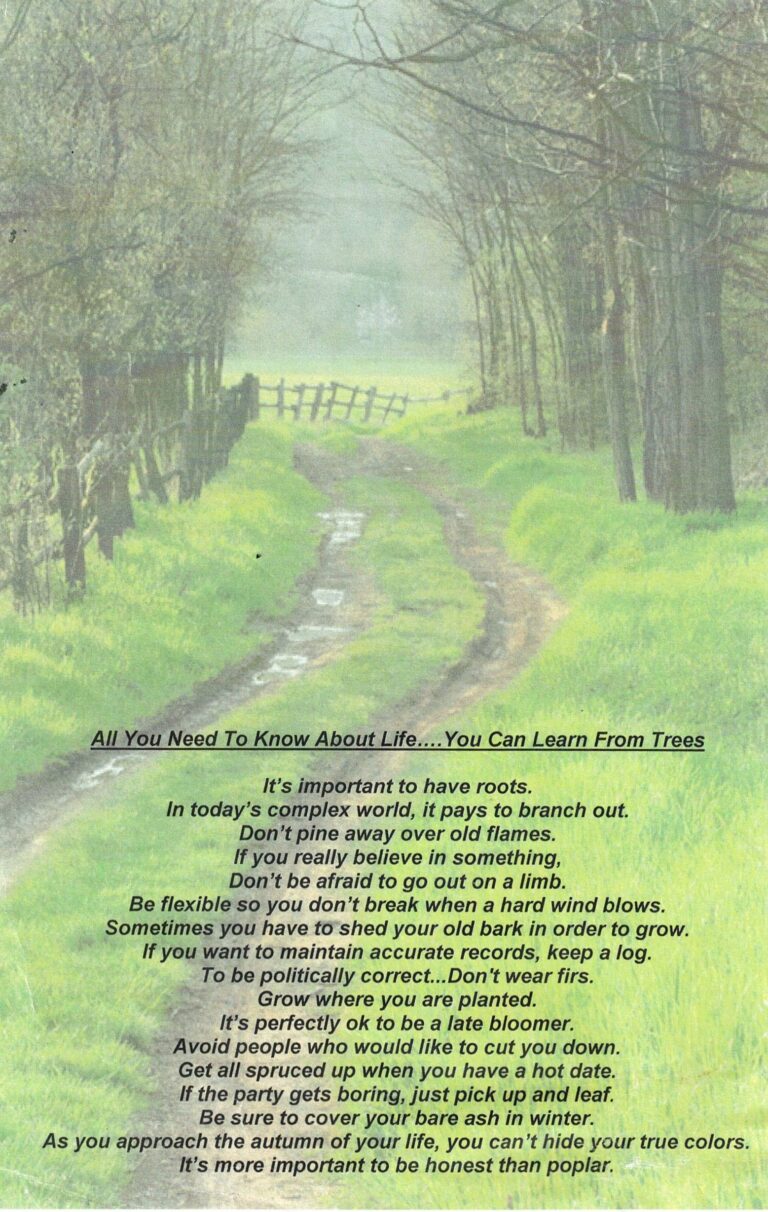Preserving the Land
From August 2000 to May 2002, I attended school at Surry Community College in Dobson, North Carolina studying viticulture and oenology. The following paper I wrote for a class assignment describing the challenges one can face when repurposing land.
The Desire to Preserve
When we bought our farm a few years ago it had been abandoned for almost 10 years. A local farmer leased a couple of fields to grow tobacco. The property owner lived in Connecticut and rarely came to the farm. The home place known as the “Rock House” has always been a landmark in the community. It was always a sad feeling to see it falling into disrepair. I can honestly say it was my dream to live on this farm.

Considering Land Sustainability
I remember this farm as it looked in1972 as I traveled by it every day on my way to work. In the summer I often saw the owners, Tom and Lucy Lynch sitting in the shade of the huge oak trees in the front yard.
When Gene and I began the process of restoring this farm in 1998 our main goal was to make it a working farm. We had an enormous task awaiting us. The waterways were grown up in trees and brush, the sandy topsoil of the tobacco fields had washed down the hill. The pond was filled with sediment from erosion. The house, barn, and other farm buildings were in a sorry state. We hauled truckloads of trash and debris to the landfill. We tore down dilapidated fences and built new high tensile fencing around the pastures. We cleaned and repaired the barn, sheds, and shops. We cut down overgrown shrubbery around the house and mowed the yard. The impact on the property was immediate because it was evident that someone cared for it. It also made a difference in the community because neighbors came over to meet us and to let us know how much it meant to them to see this farm revived.
The decision to plant a vineyard was an exciting idea because it was different from anything going on in our area. We were developing a plan for our farm that would not only create income, but interest and diversity in this farming community. It was the realization that farmland in the Mebane area was rapidly disappearing that fueled my desire to preserve our farmland. About that time I began to hear bits and pieces about sustainable agriculture from a couple of guys we built a fence for and who work for NC State. They sent me publications from ATTRA – Appropriate Technology Transfer for Rural Areas. We asked for help from our county soil and water conservation people to come out and advise us on the best way to maintain our waterways. If you follow their recommendations, there is a reimbursement program for maintaining waterways. Alamance County’s Agricultural Extension Agent, Rett Davis was and is a constant source of information.
Sustainable farming is a way of growing crops at a profit while minimizing the negative impact on the environment. It is a whole-system approach that focuses on the long-term health of the land. To be sustainable we must meet three objectives, environmental health, economic profitability, social and economic equity.

The Importance of Planning Land Preservation
Making the transition to sustainable farming begins with a plan. This plan must meet the needs, goals, and abilities of each farm. An important part of the plan is to monitor the results. New ideas, cultural practices, and products are constantly emerging, and we must adapt our plan. Each management decision must be carefully weighed for its impact to the soil, water, air, workers, and community.
SOIL OBJECTIVE:
- prevent erosion, keep soil in soil, improve quality
- cover crops to add nutrients, increase stability, prevent runoff
- additions of organic matter, composts, manures to increase water content and
- microbial diversity
- reduce tillage
- avoid traffic on wet soils
- use more environmentally friendly chemical fertilizers
- soil testing to avoid imbalances and unnecessary costs
- aeration of soil to receive nutrients and water with less runoff and prevent compaction
WATER OBJECTIVE:
- Conservation and storage, improve quality
- drought tolerant crops/rootstocks
- low-volume drip irrigation
- limit contamination by pesticides, nitrates and selenium
- aeration of soil to prevent water runoff
AIR OBJECTIVE:
- Improve air quality
- reduce smoke from agricultural burning
- reduce pesticide drift
- limit nitrous oxide emissions from nitrogen fertilizer
- cover crops or strips of native perennial grasses to reduce dust
WEED PREVENTION OBJECTIVE:
- Improve air quality
- reduce smoke from agricultural burning
- reduce pesticide drift
- limit nitrous oxide emissions from nitrogen fertilizer
- cover crops or strips of native perennial grasses to reduce dust
INSECT PEST MANAGEMENT OBJECTIVE:
- Minimize crop damage by insect pests. Know the major pests, their life cycles and the beneficials that attack them
- Restore populations of beneficials
- Reduce practices that destroy beneficials
- manage habitats for beneficials such as protected zones, cover crops, companion plants
- IPM, Integrated Pest Management, program to incorporate habitat
- Modification, cultural, physical, biological, and chemical practices to minimize crop losses
PLANT DISEASE MANAGEMENT OBJECTIVE:
- Discourage pathogens and minimize crop losses resistant cultivars
- adequate air movement
- good soil drainage
- monitor environmental conditions to determine whether preventative fungicidal sprays are needed
WILDLIFE OBJECTIVE:
- Protect wildlife habitats
- limit use of pesticides
- protect plant and water sources
- prevent erosion and sedimentation in riparian habitats
CONCLUDING REMARKS
SOIL RESULTS:
Improvements to soil were accomplished by the following;
- soil testing to determine nutrient needs, appropriate levels of lime and fertilizer were applied
- all open fields were reseeded with sod drill to prevent erosion
- composted manure from horse barn was applied to pastureland
- pastures were aerated to prevent soil compaction
- composted leaves will be incorporated into the soil of a large field to improve organic matter and break up heavy clay composition
- livestock was rotated on pastureland to allow grass to recover
WATER RESULTS:
- Improvements to water quality
- waterways were cleared and seeded to facilitate water runoff
- installed 2700 gallons of water storage piped from spring piped so that overflow goes into the pond
- installed drip irrigation in the vineyard, low volume irrigation prevents runoff
- aerated grassy strips in and around vineyard to prevent water runoff
AIR RESULTS :
- Improvements to Air Quality
- limited burning of brush piles
- reseeded grassy areas to reduce dust
WEED & PEST MANAGEMENT RESULTS:
Our plan is in the beginning stages. We have one year under our belt in the vineyard. Weeds and pests were major problems. This next growing season I plan to know more about lifecycle of pests, beneficials and habitats. We hope to purchase a grape hoe for weed control and reduce, if not, eliminate the need for herbicides in the vineyard. Also on the list is an air blast sprayer capable of directing fungicide to the appropriate area with less drift and waste.
ENERGY RESULTS:
Our energy plan includes switching from an oil-fired boiler in the house to a geothermal heat pump. This will eliminate the need for oil and reduce our electrical bill considerably. At the proposed winery building we are considering a geothermal loop placed in the pond for our heating and cooling requirements. We are currently using gasoline powered pumps for the drip irrigation. We will be changing over to an electrical pump this spring.
WILDLIFE RESULTS:
The pond is the center for all wildlife on the farm. Turkey, geese, ducks, deer, raccoons, birds and fish rely on this water source. We have expanded the pond, cleaned up swampy areas and made it accessible for wildlife. Our greatest wish is for visitors to our farm to appreciate and enjoy the benefits of farming. We are all connected to the land and it is our duty to be faithful stewards of all our natural resources.
RESOURCES:
The Carolina Farm Stewardship Association – http://www.carolinafarmstewards.org
ATTRA – Appropriate Technology for Rural Areas – http://www.attra.org
SAN – Sustainable Agriculture Network – http://www.sare.org
SARE – UCDAVIS – http://www.sarep.ucdavis.edu/concept.htm
Southern Sustainable Agriculture Working Group – http://www.attra.org/ssawg/
Center for Holistic Management – http://www.holisticmanagement.org/
More Images
Click a photo for a larger view and open the gallery.



